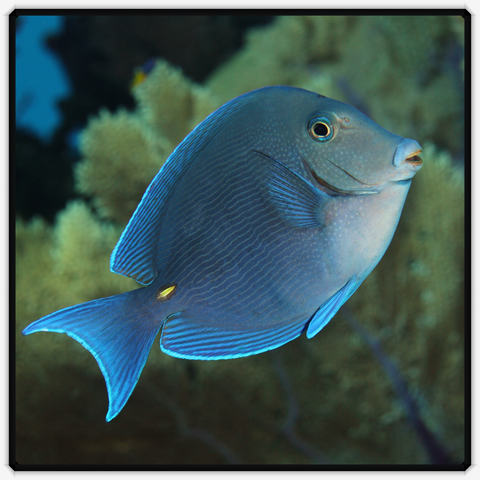The underwater world is a canvas of vibrant colors and unique marine life, and among the treasures of the Caribbean seas, the Blue Caribbean Tang (Acanthurus coeruleus) stands out as a true gem. Known for its stunning blue hues and graceful swimming, this species of surgeonfish captivates the hearts of divers, snorkelers, and aquarium enthusiasts alike. In this blog post, we'll dive into the captivating world of the Blue Caribbean Tang, exploring its distinctive characteristics, natural habitat, and the importance of conservation for this beautiful species.
The Blue Caribbean Tang is easily recognized by its striking coloration. True to its name, this species showcases a vibrant blue body with contrasting yellow accents near its pectoral fins and tail. Its sleek, disc-shaped body and characteristic scalpel-like spine on the caudal peduncle contribute to its overall graceful appearance. These distinctive features make the Blue Caribbean Tang an iconic and easily identifiable resident of the Caribbean coral reefs.
As its name suggests, the Blue Caribbean Tang is native to the warm tropical waters of the Caribbean Sea. It is commonly found in coral reefs, particularly in areas with abundant coral cover and clear water. These fish prefer shallow depths, allowing them to exhibit their agile swimming behavior while foraging for food among the coral structures.
Blue Caribbean Tangs are herbivores, playing a crucial role in maintaining the health of coral reef ecosystems. Their diet primarily consists of algae, which they graze from coral surfaces. The specialized mouth and teeth of the Blue Caribbean Tang are adapted for efficiently scraping and consuming algae, contributing to the prevention of algal overgrowth that could otherwise harm the coral.
The captivating beauty of the Blue Caribbean Tang has made it a sought-after species in the aquarium trade. However, keeping these fish in captivity requires careful consideration of their specific needs. Adequate tank size, proper water quality, and a balanced diet that mimics their natural feeding habits are essential for the well-being of Blue Caribbean Tangs in aquariums.
Despite their popularity, Blue Caribbean Tangs face threats in their natural habitat. Overfishing, habitat destruction, and the impacts of climate change, including coral bleaching, pose challenges to the survival of this species. Sustainable fishing practices, marine protected areas, and efforts to combat climate change are crucial for ensuring the continued presence of the Blue Caribbean Tang in its native waters.
The Blue Caribbean Tang, with its dazzling colors and vital ecological role, symbolizes the beauty and fragility of coral reef ecosystems. As we admire these elegant fish, it is important to recognize our responsibility in preserving their natural habitats. Through conservation efforts, sustainable practices, and raising awareness about the importance of protecting marine biodiversity, we can contribute to ensuring that the Blue Caribbean Tang continues to enchant generations to come, embodying the magic and wonder of the Caribbean seas.




